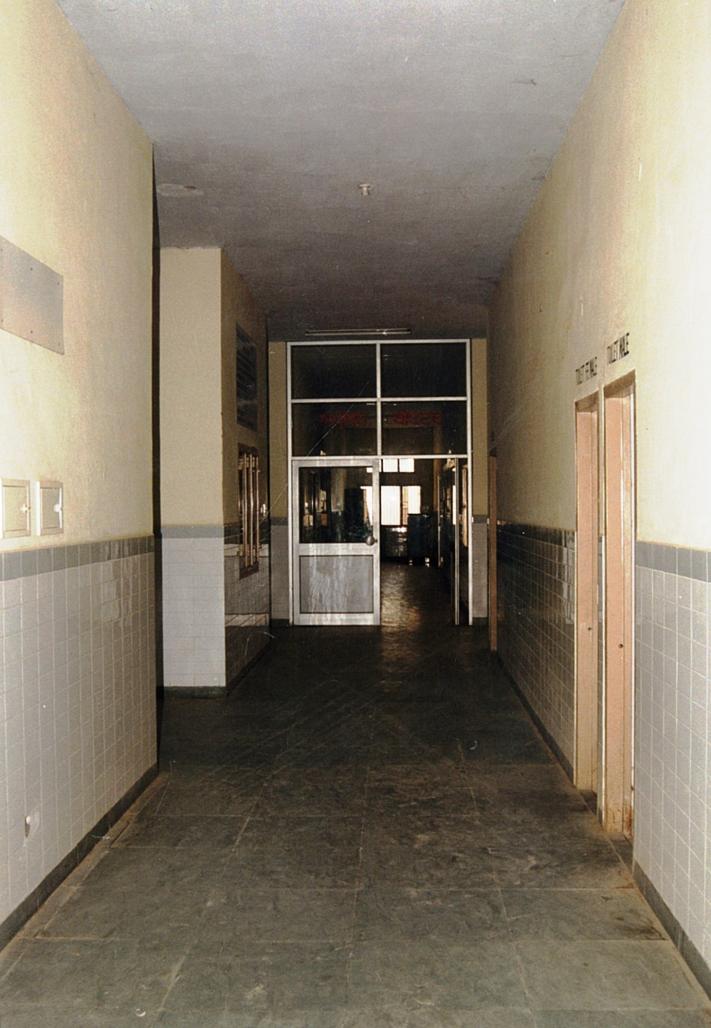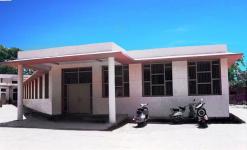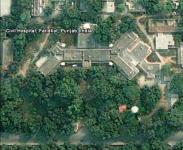GYNECOLOGY & PEDEATRIC CLINIC
DISTRICT HOSPITAL, FARIDKOT, PUNJAB
District Hospital Faridkot has a sprawling campus of about 3.20 hectares. The main hospital building was constructed in 1926. It is a horizontal, single-storied brick-masonry structure built in the colonial style of architecture, and incorporates the features like colonnaded verandahs, architraves, cornices, jaalis etc. In spite of its visual appeal, the hospital was lacking in some modern facilities. Prominent among these was a Gynecology and Pediatric Clinic, which has been constructed afresh in the year 2000. The design of this small block was an arduous task, as it has to accommodate modern functions inside, and look traditional from outside so as to merge with the historical settings. In response to these factors, architect designed a low-height, horizontally spreading structure in brick masonry. Externally the building is finished in cement plaster and painted to match with the existing building. Some of the existing features, which have become obsolete in the modern context like colonnaded verandahs, architraves, jaalis etc. have been dispensed with while others like cornices have been modified purposefully and incorporated in the new block.
The Clinic has been designed in a limited space adjoining the existing wards. It has been linked strategically with the old building so that the existing female wards can be used conveniently. The plan form has been evolved in consonance with the size and shape of the site available for the purpose. Function wise, the building comprises two portions i.e., the outpatient unit and the delivery unit. The out patient unit is located on the front and has direct access from the approach road. A small portico juts out of the building to make the entrance conspicuous and inviting. From here one enters a spacious entrance-cum-waiting hall. Three consultation rooms for gynecology, family planning, and pediatrics, besides an immunization room are located adjacent to the waiting hall.
A spacious link corridor emanates from the entrance hall and provides access to the delivery unit and the existing female wards. The corridor draws abundance of natural light and ventilation through regulated window openings on one side. The disciplined repetition of these windows and the link passage has been conceived as the modern and functional version of the old colonnaded verandahs, which are vulnerable to the vagaries of weather. The delivery unit though small, is designed in an efficient and functional manner. It has two access points from the main circulatory, that is, one for the patients and the other for the doctors and paramedical staff. The doctors and the staff can enter the core area through their change rooms. The unit accommodates a delivery room, operation theatre, sterilization, scrub up, labour room, preparation room and a nursery.
Internal finishes have been decided keeping in mind the factors like cleanliness, maintenance and durability. All the circulation areas have polished kota stone flooring. The delivery room and operation theatre has flooring, and dado up to ceiling height, in marble. Other rooms have terrazzo flooring. Ceramic-tile dado up to 3.15 metre height has been provided in all the circulation areas. Walls and ceiling have been plastered and painted off-white. Doors have pressed steel frames and flush wooden shutters. Window frames are in tubular steel and open able shutters in extruded steel sections.
1999
2002





